Smoked Chicken Wings: a Thermal Trick for Crisp Skin
We’ve fried wings. We’ve grilled wings. So it naturally follows that we would eventually smoke some wings, right? Well, that day has come! Here we’ll discuss the advantages and difficulties of smoking chicken wings, and how those difficulties can be resolved with thermal thinking. We’ll follow the cooking method from Susie Bulloch’s Hey Grill Hey, and we’ll be using a super savory, super easy Thai sweet chili sauce to dress the wings. Grab your thermometers and let’s get going.
Why smoke chicken wings?
The answer to this question may seem obvious: smoke chicken wings for flavor. But while that is an answer that is completely true, it is also incomplete.
Smoking chicken wings allows you to do more. When frying wings, you’re limited to small batches, reheating the oil and adding more time between each batch. It’s a lot of frying if you’re planning on serving very many people at all. But with a smoker, you can lay out pounds and pounds of wings all at once, cook them all at once, sauce them in one or more batches (if you don’t have a big enough bowl for all of them) and get them all to the table while they’re still hot and fresh.
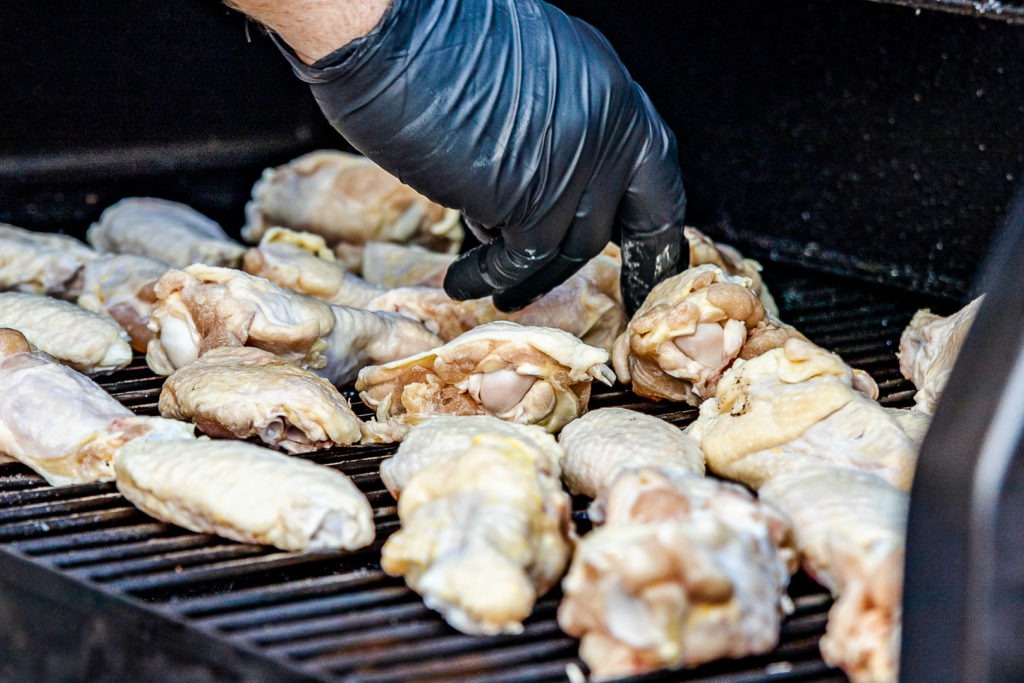
More flavor and easier cooking? Count me in.
Smoked chicken wings and rubbery skin: problems and solutions
If you’ve ever eaten smoked chicken wings, there’s a good chance that you were underwhelmed with their texture. Smoking at relatively low temperatures, like the 250°F (121°C) we recommend here, makes chicken skin rubbery, flabby and, well, gross. You need higher heat to render the fat that hides under the skin and to properly dry the water out of it—that’s what frying does: dehydrate the skin so that all you have left is the protein shell that used to hold that water in place.
So what are we to do? Smoke flavor doesn’t happen at higher temperatures. The answer, of course, is to cook our chicken wings in two stages: a flavoring stage and a crisping stage. Because smoke flavor penetrates into raw meat better than it does into cooked meat, the smoking cycle comes first. Cook the wings at 250°F (121°C) for 30 minutes to smoke them, then crank the heat on your smoker up to 425°F (218°C) and cook the wings until they reach 175°F (79°C) internal temp. (Wings are high in connective tissue and need to be cooked to a higher temperature than breast meat to become tender and tasty. They’ll be safe at a lower temperature, but they’ll be tastier at this higher temp.) The higher temperature will quickly render the fat from the chicken skin and give it that crisp bite that we all want from our chicken wings.
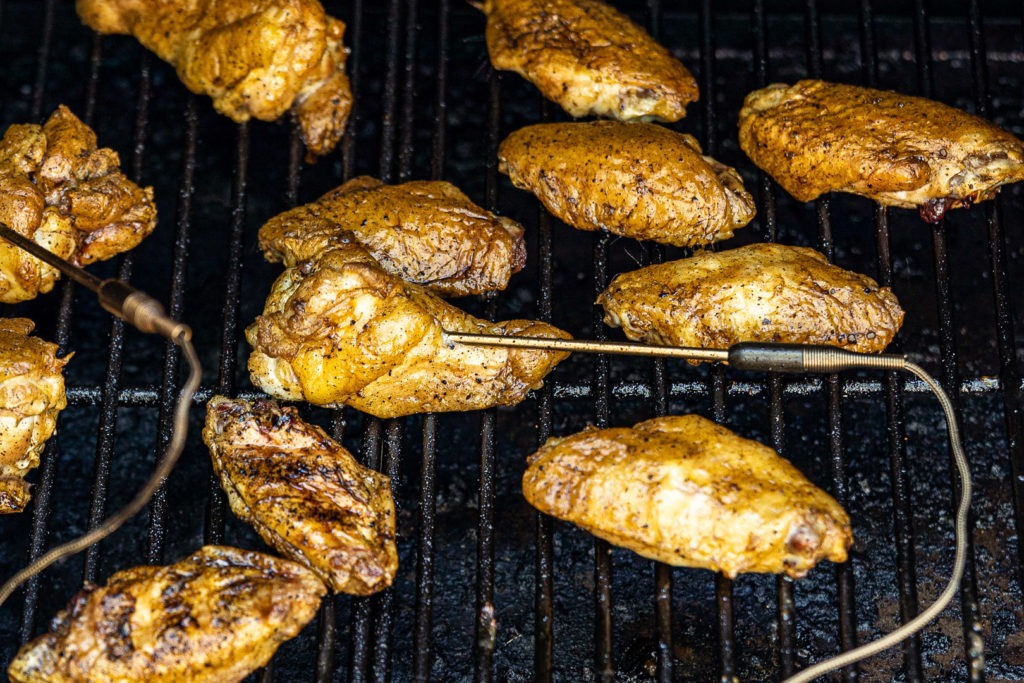
To make sure you hit that target pull temp, use a leave-in probe thermometer like ThermoWorks’ Smoke X2™ inserted into two of the largest wings in different parts of the smoker.
By choosing large wings for your probes, you’ll know that the smaller ones reach at least the same temperature. Probe a small wing that cooks more quickly and you’ll still have undercooked large wings. And, as this kind of meat can take even higher temps than we’re shooting for without drying out, it’s ok if the smaller ones go hotter. By putting probes in wings on opposite ends of the cooker, you’ll partially compensate for hot spots or uneven temps in the smoker.
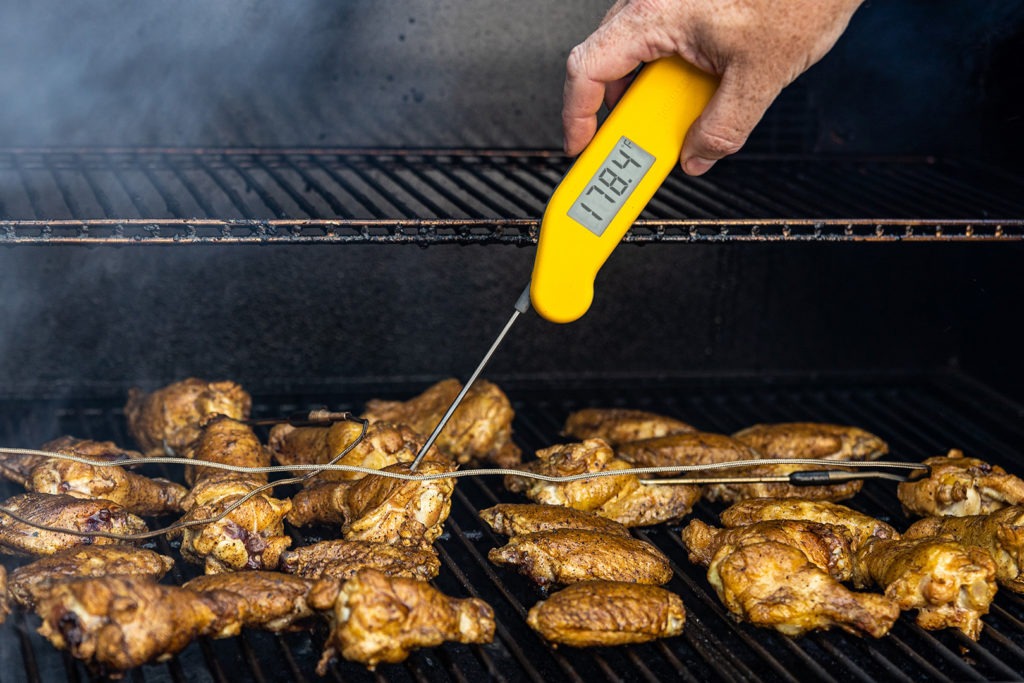
Of course, you’ll still need to verify the temperature in more wings, but the speed of Thermapen® makes that easy and quick to do.
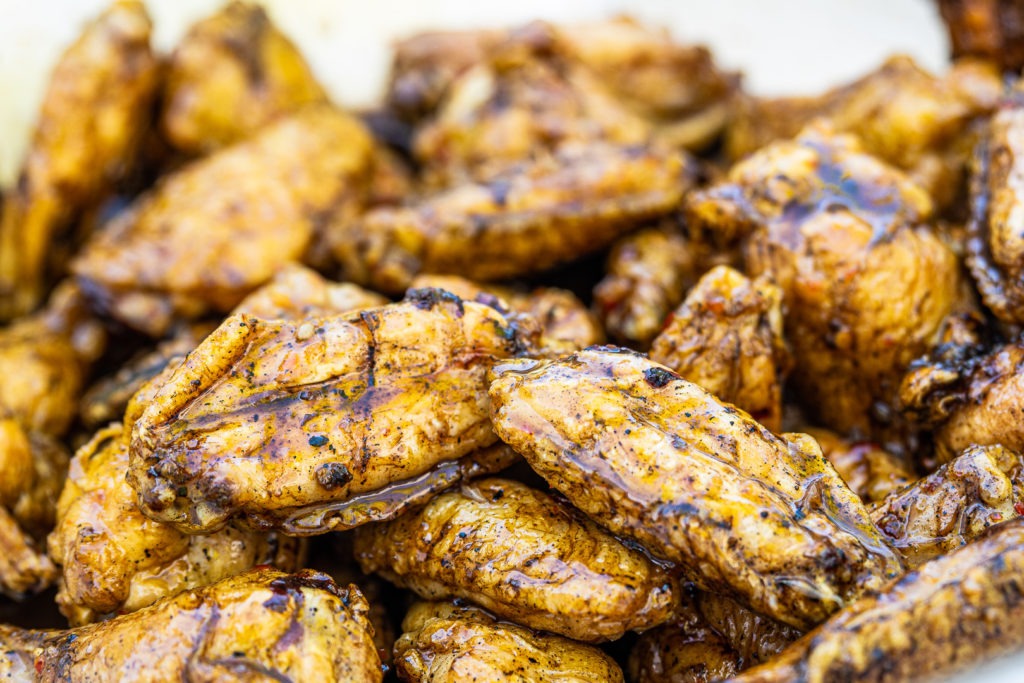
A further chicken-skin crisping cheat
There is another trick you can use to help make sure you get the crispest skin: use baking powder. Take a look at what Niki Achitoff-Gray of SeriousEats has to say about it:
Baking powder, it turns out, is good for quite a lot more than baking. The slightly alkaline mixture raises the skin’s pH levels, which allows proteins to break down more efficiently, giving you crisper, more evenly browned results. Simultaneously, it combines with the bird’s natural juices, forming carbon dioxide gas that leaves you with a layer of tiny bubbles. It’s these bubbles that increase the skin’s surface area, allowing it to develop a crunchy texture once cooked.”
Niki Achitoff-Gray, SeriousEats.com
You’ll get best results if you baking-powder the wings 12–24 hours before cooking, which will allow the acid and base to penetrate into the skin, so the micro-bubbles form deeper inside. But even an application right before cooking helps some.
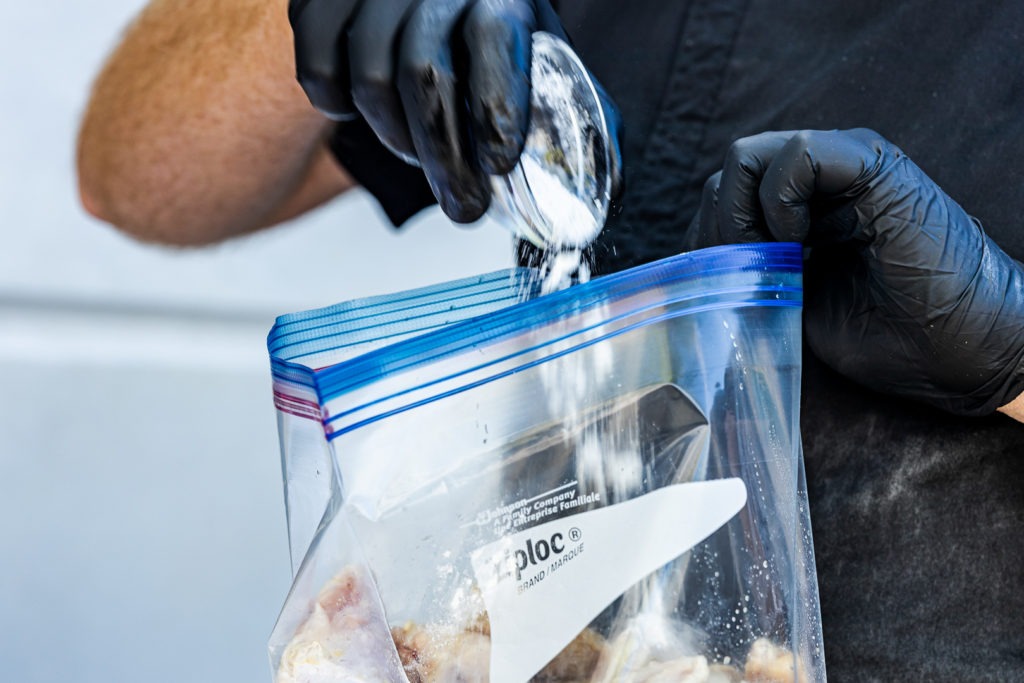
Sweet chili sauce for chicken wings
You can sauce your wings how you like, but this time we went with a delicious Thai-style sauce. It’s 4 parts sweet chili sauce with 1 part each of fish sauce and fresh lime juice. (Yes, that seems like a lot of fish sauce, but trust me, it works.) We also heated our sauce to 110°F (43°C) so that we could very gently melt and emulsify some butter into it, giving it a richer consistency and flavor. In all honesty, though, I think I’d skip the butter. The brightness of the lime juice and the (good) funk of the fish sauce both feel more muted with the butter. If you’re serving this to flavor weaklings, use the butter. If you like the volume of your flavor cranked a little closer to 10 (or even 11), leave the butter out. If this isn’t spicy enough for you (it isn’t very spicy), give the suace a squeeze of sriracha or some other chili sauce.
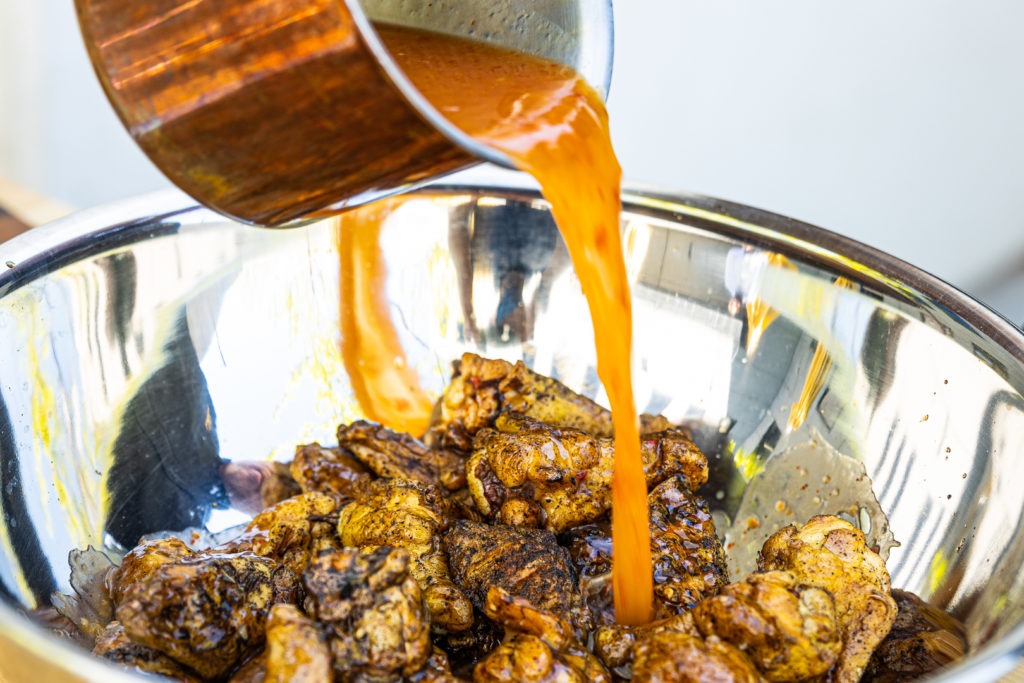
I hope you’ll give this recipe a try. The smoked wings have such a good, deep flavor and their texture is excellent. It’s an easy cook to do, coming in at just over an hour all told (not counting allowing the baking powder sit for 12+ hours, of course). Use Smoke X2 to monitor the temps and Thermapen to verify them and you’ll have wings to be proud of. And try this sauce. Like smoked wings themselves, it’s unique, it’s fun, and it’s a great accompaniment to summer flavors. Happy cooking.
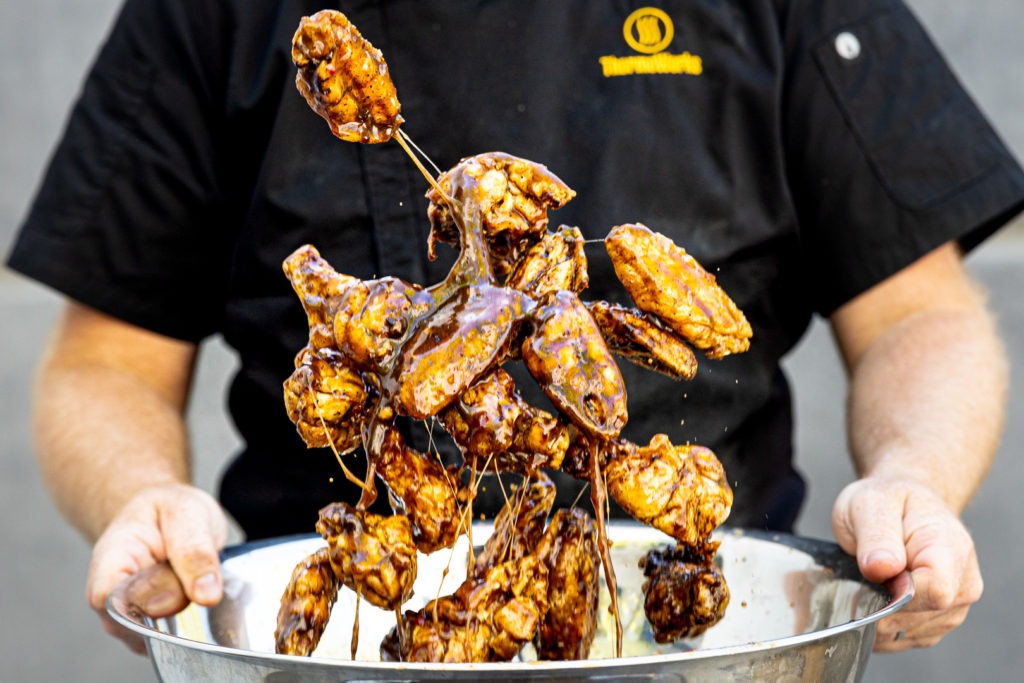
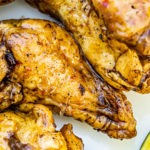
Smoked Chicken Wings: a Thermal Trick for Crisp Skin
Description
Smoked chicken wings, following the method from HeyGrillHey.com
Sauces with a Thai sweet chili sauce
Ingredients
For the wings themselves
- 5 lb chicken wings
- 1 1/2 Tbsp baking powder
- 1 tsp salt
For the sauce
- 12 oz Thai sweet chili sauce (Mae Ploy, for instance)
- 3 oz fish sauce
- 3 oz fresh lime juice (from about 5 limes)
- 8 Tbsp butter, cut into pieces (optional)
- Sriracha, sambal oelek, or other chili sauce to taste (to add more heat if you want it)
Instructions
- Up to one day in advance, toss the wings with the baking powder and the salt. (A gallon bag works well for this, but so does a large bowl.)
- Heat your smoker to 250°F (121°C).
- Place the wings in the smoker so that they don’t overlap. Smoke them at 250°F (121°C) for 30 minutes. Use a timer like the Extra Big & Loud to time the cook.
During this time, you can prepare the sauce.
- If omitting the butter, simply combine the sauce ingredients in a bowl and whisk them together.
- If using the butter, warm the other ingredients gently in a pot over low heat, monitoring the temperature of the sauce with a Thermapen. When it reaches 110°F (43°C) pull it from heat and stir the cut-up butter into the sauce.
Finish the wings
- When the timer goes off, increase the heat of your smoker to 425°F (218°C).
- Insert the probes from a Smoke X2 into two large wings on opposite sides of the grill.
- Set the high-temp alarm to 175°F (79°C) and cook until the alarm sounds.
- When the high alarm sounds, verify the temp in several wings (or all of them!) using your Thermapen.
- Remove the wings from heat and toss with the sauce. (You won’t need all the sauce. Save it, refrigerated, for later.)
- Serve. You could also hit these with a showering of chopped cilantro and/or chopped peanuts and it would be amazing.
Shop now for products used in this post:


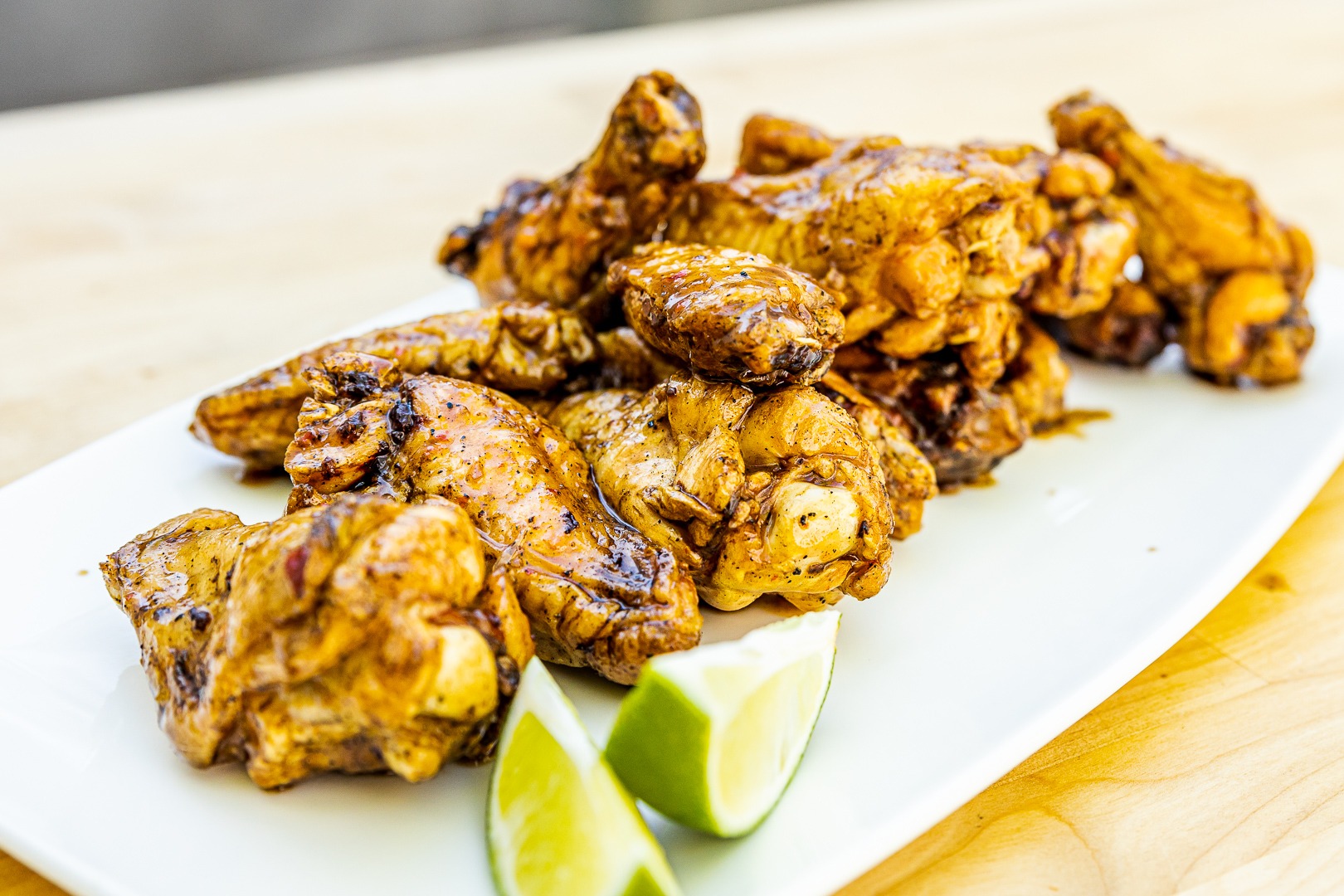
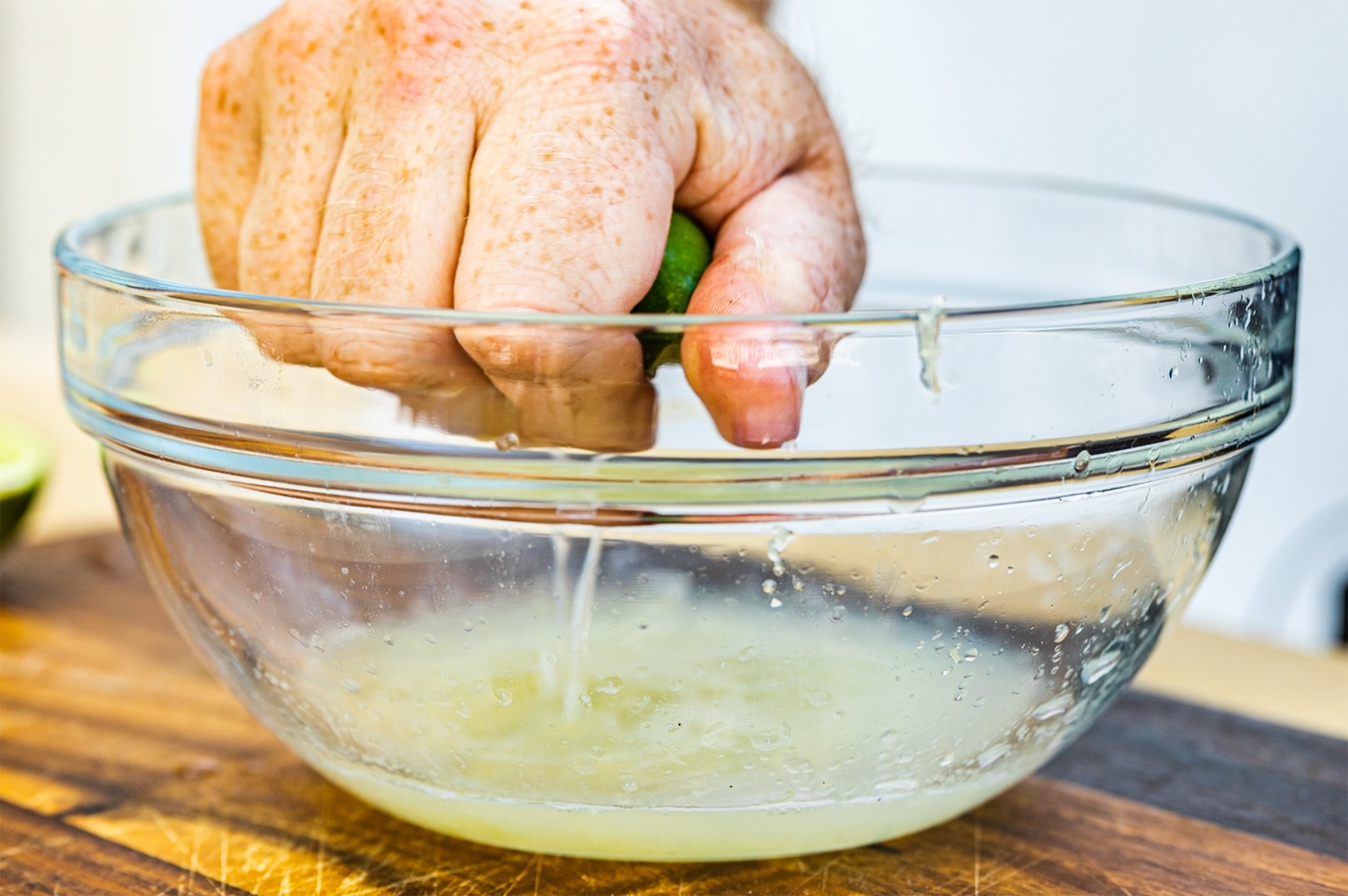
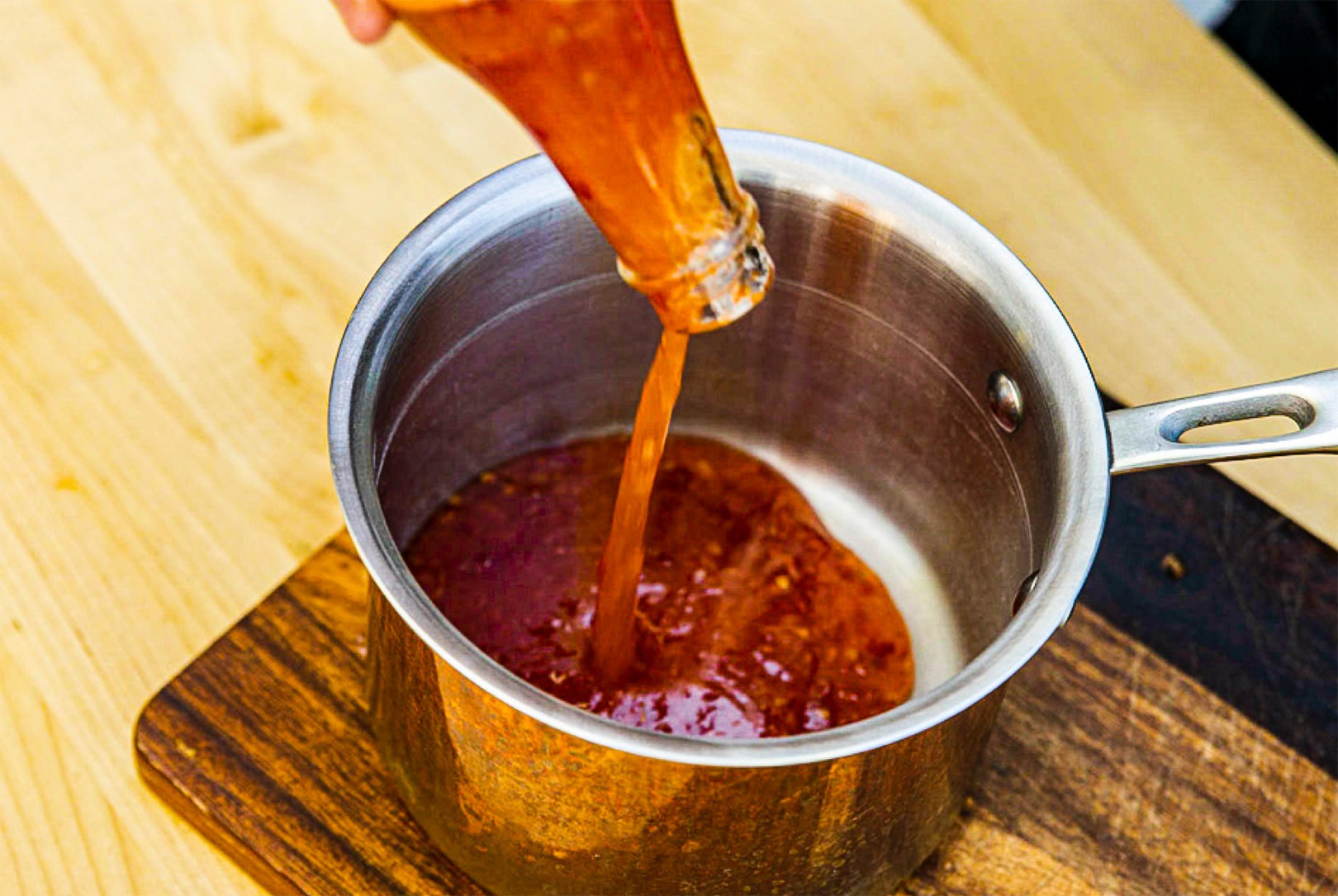
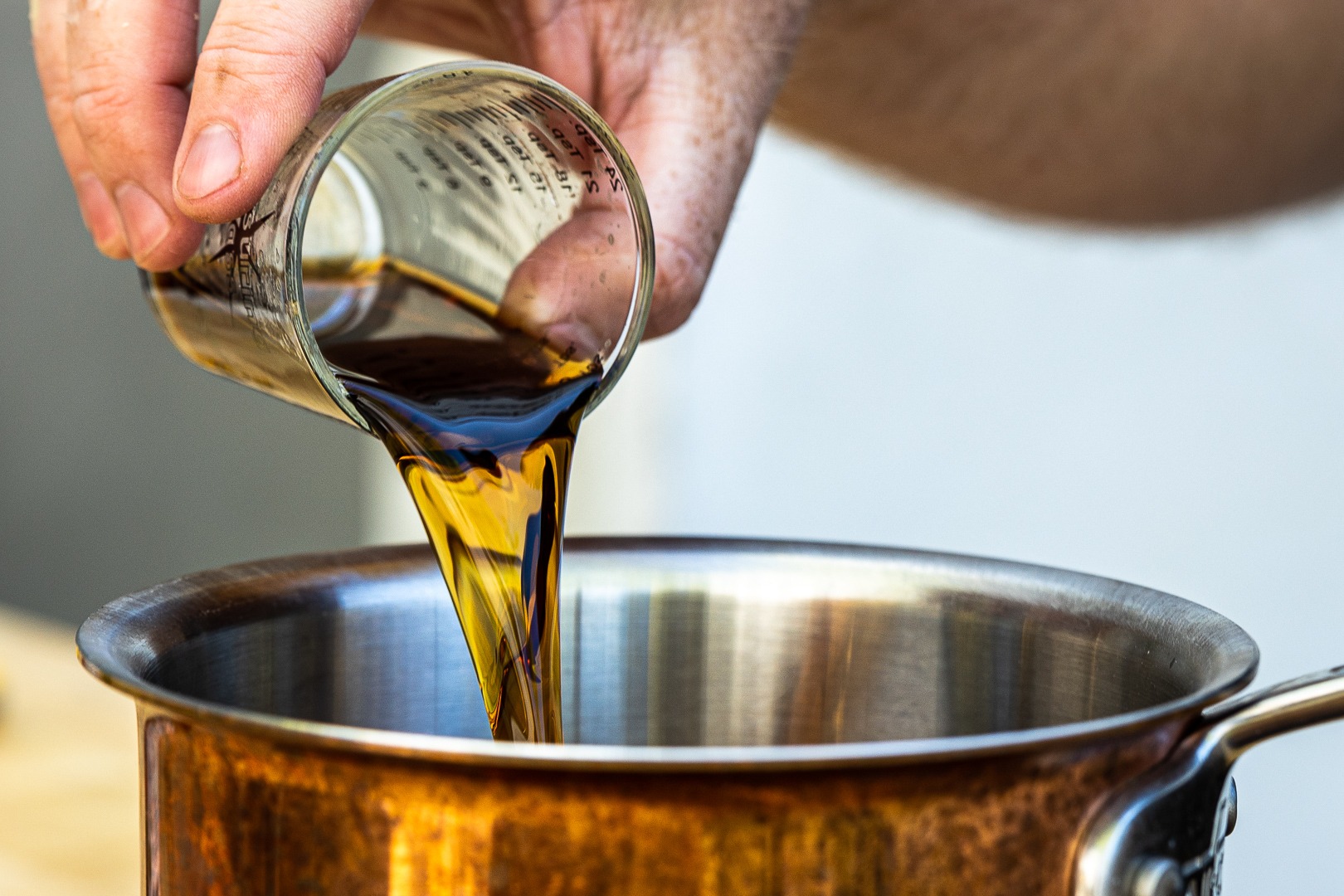
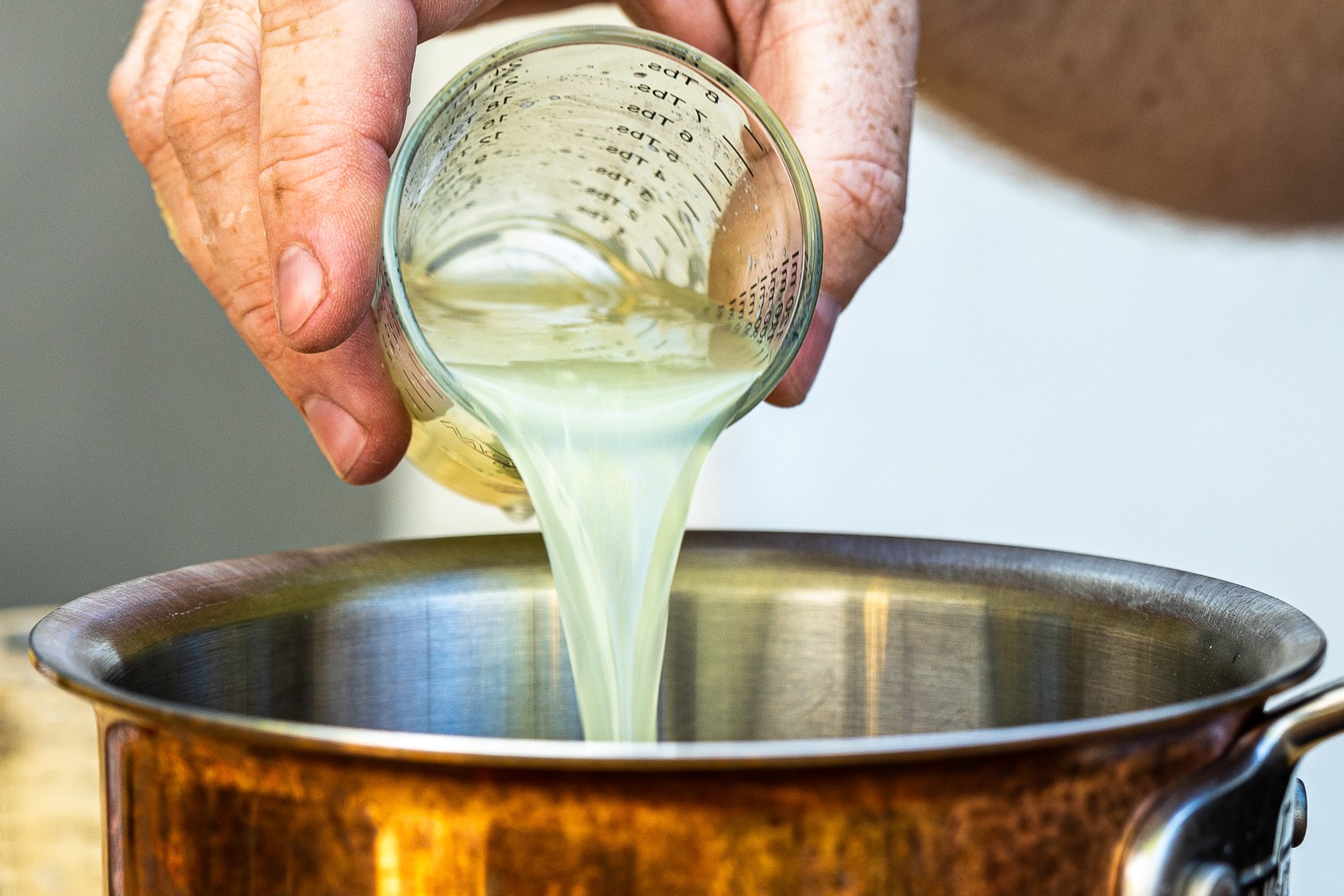
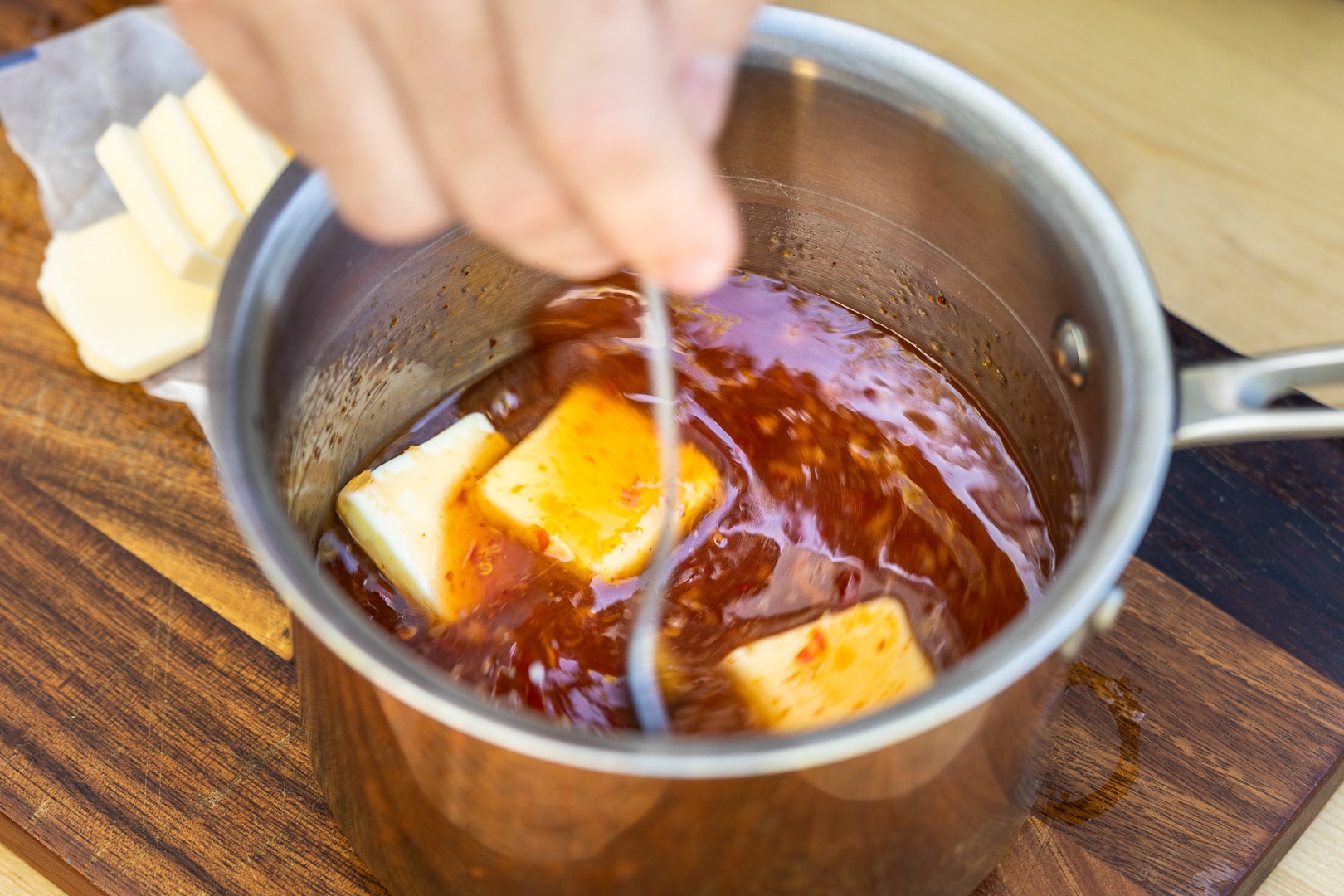
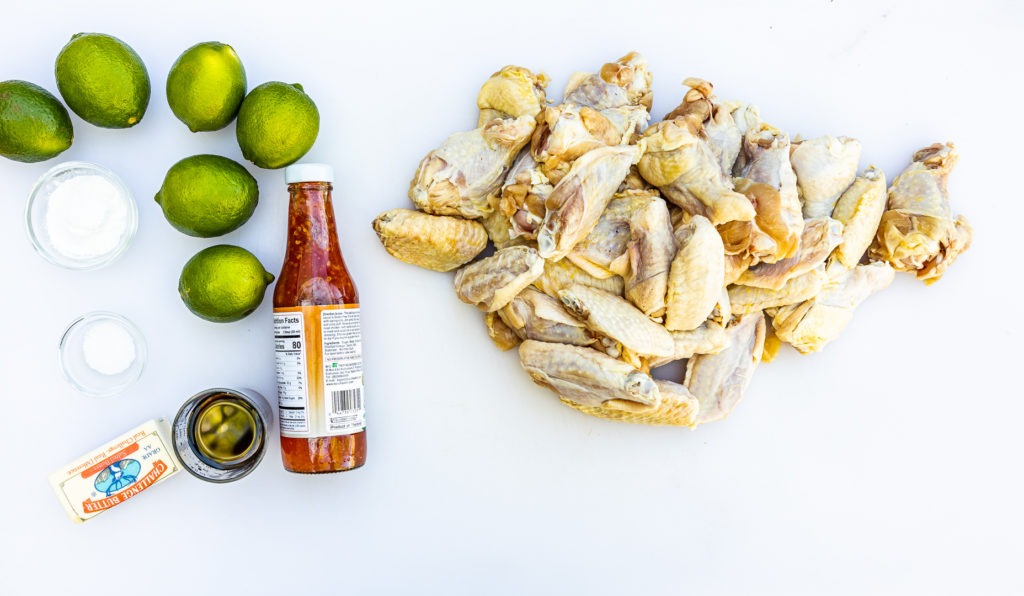
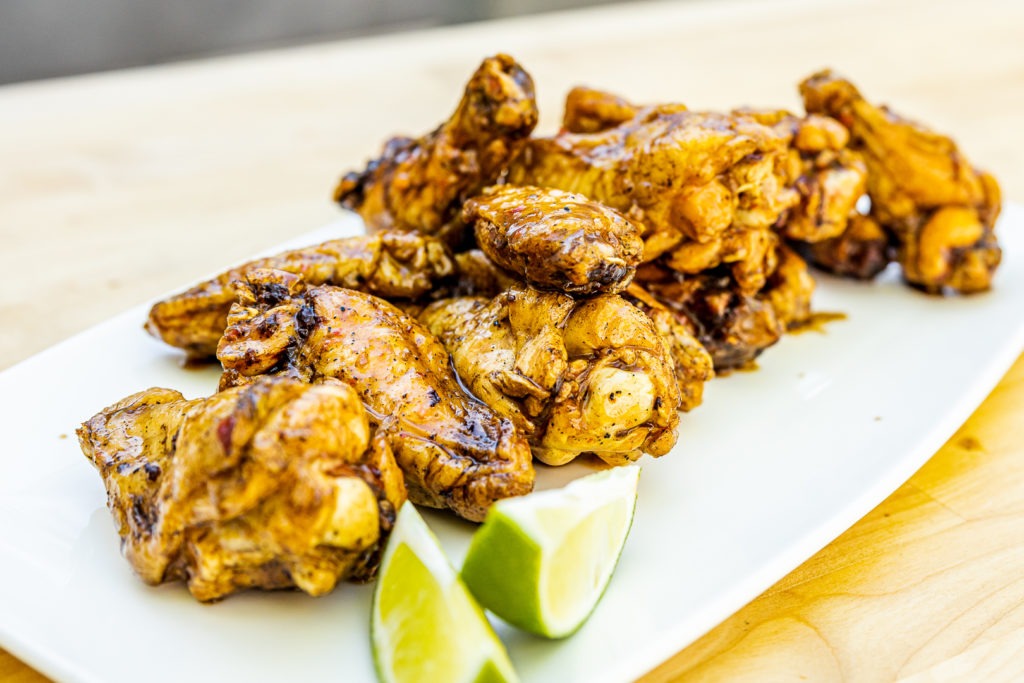
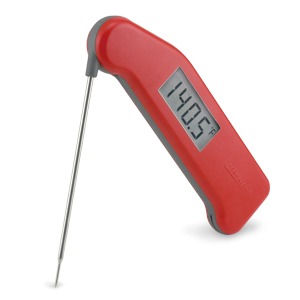

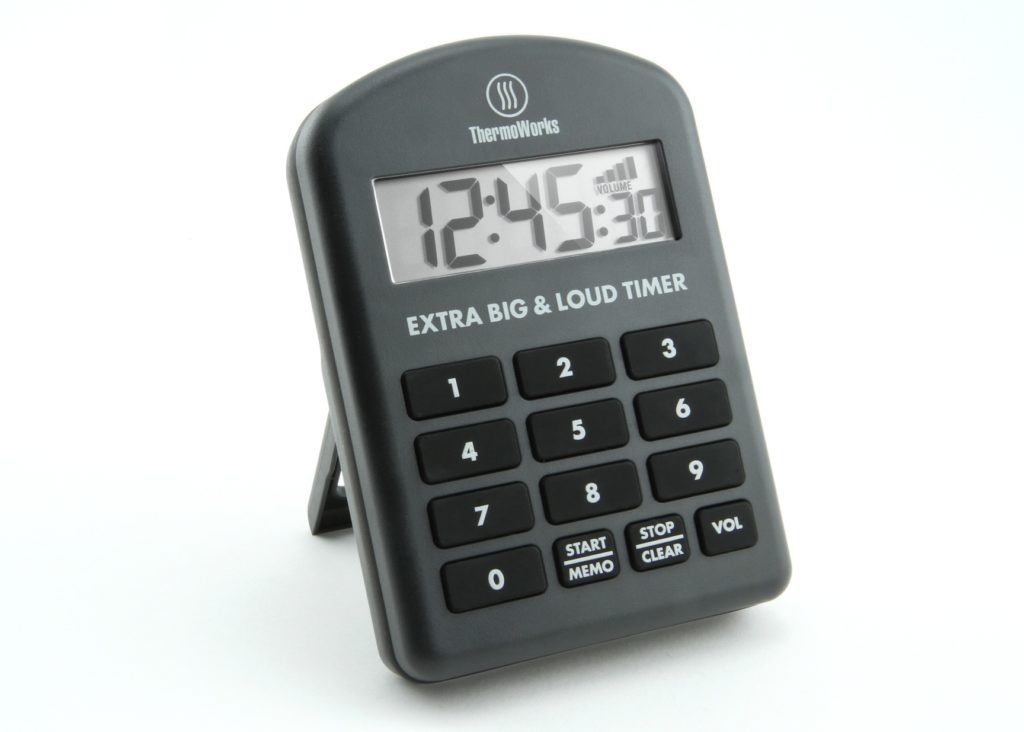
Nice! So salting them that far in advance won’t draw out too much moisture ? Look forward to trying this soon.
Correct!
Question: Other recipes for wings use baking powder, but after coating, the wings are put in the frig on an uncovered wire rack on a sheet pan; doing so allows moisture to evaporate from the wings (https://www.seriouseats.com/hot-and-numbing-oven-fried-xian-chicken-wings-recipe). Your instructions end with coating the wings in a zip-lock or bowl, which makes me wonder, if the wings are in a zip-lock or bowl, where does the moisture go?
Coating them and then leaving them to dry on a rack or in a pan would be even better. Thanks for the idea!
Martin, great recipe. Did it twice now. More baking powder/seasoning salt the second time yielding a crispier outcome. The first time we, amazingly, had all of the ingredients in the fridge including the fish sauce. I thought the sauce recipe was really good. Tonight on the crispier wings my son showed up with a hot sauce that had butter, Choluba, and a good chilli pepper herb blended in Calgary from some interesting ingredients well beyond the Canadian border. It was really fine and not so hot that we (the parents) couldn’t eat it.
Keep up the good work. Did the brisket flat recipe recently and was pretty faithful to following what was on the blog. It was quite impressive given that the flat can be overdone easily. Your insights were very helpful.
I continue to promote this site to friends as one of the best sites out there integrating great recipe ideas with food thermal science. No other blog/website that I am aware of comes close.
Dave,
I’m so glad to hear you’ve tried this twice already! And of course, I’m delighted and grateful for the compliments. Keep up the good work, yourself, and happy cooking!
Please tell me what I did wrong…followed recipe exactly..times, temperatures, all of it. Taste is fine, but the skin is like shoe leather..all the fat has rendered, yes, but the skin could not be chewed….ended up discarding skin and eating the wing…what good is that??? But seriously, obviously something went wrong, but I don’t know what so I can’t fix it.
Thanx
Nina
Nina,
I’m sorry to hear it didn’t go well. It is possible that the skin could just use some more time on the high heat. Though the meat may be done and tender, the skin may need to be held closer to the higher heat part of your grill for a few minutes longer. I hope that helps. If not, email me and we can try to figure out what’s going on.
Nina
I had similar problem. Followed instructions and used baking powder, and skin was like leather. Any suggestions as to what I should do differently?
Thanks
Try turning the smoker up by 50°F for 10 minutes at the end of your cooking.
We used the cooking method last year with the “Alabama White Sauce”. My wife said they were the beet ever.
Question- I have GrillGrates for my large Weber charcoal grill. The surface easily gets above 500deg. (Checked with my Thermoworks Infrared thermometer. )
Do you thinks the last high temp step should be on the GrillGrates or on the regular grate? I can see reasons for both.
I’d go grill grates, probably! extra char and crispy bits!